Cosmonautics regularly achieves stunning success. Artificial satellites of the Earth are constantly finding more and more diverse applications. Being an astronaut in near-Earth orbit has become commonplace. This would have been impossible without the main formula of astronautics - the Tsiolkovsky equation.
In our time, the study of both planets and other bodies of our solar system (Venus, Mars, Jupiter, Uranus, Earth, etc.) and distant objects (asteroids, other systems and galaxies) continues. The conclusions about the characteristics of the cosmic motion of Tsiolkovsky's bodies laid the foundation for the theoretical foundations of astronautics, which led to the invention of dozens of models of electric jet engines and extremely interesting mechanisms, for example, a solar sail.
Main problems of space exploration
Three areas of research and development in science and technology are clearly identified as problems of space exploration:
- Flying around the Earth or constructing artificial satellites.
- Moon flights.
- Planetary flights and flights to the objects of the solar system.

Tsiolkovsky's equation for jet propulsion has contributed to the fact that mankind has achieved amazing results in each of these areas. And also, many new applied sciences have appeared: space medicine and biology, life support systems on a spacecraft, space communications, and others.
Achievements in astronautics
Most people today have heard of major achievements: the first landing on the moon (USA), the first satellite (USSR) and the like. In addition to the most famous achievements that everyone hears about, there are many others. In particular, the USSR belongs to:
- first orbital station;
- first flyby of the moon and photos of the far side;
- first landing on the moon of an automated station;
- first flights of vehicles to other planets;
- first landing on Venus and Mars, etc.
Many people don't even realize how huge the achievements of the USSR in the field of astronautics were. If anything, they were significantly more than just the first satellite.

But the United States has made no less contribution to the development of astronautics. In the US held:
- All major advances in the use of Earth orbit (satellites and satellite communications) for scientific and applied purposes.
- Many missions to the Moon, exploration of Mars, Jupiter, Venus and Mercury from flyby distances.
- Setscientific and medical experiments conducted in zero gravity.
And although at the moment the achievements of other countries pale in comparison to the USSR and the USA, but China, India and Japan actively joined the exploration of space in the period after 2000.
However, the achievements of astronautics are not limited to the upper layers of the planet and high scientific theories. She also had a great influence on simple life. As a result of space exploration, such things have come into our lives: lightning, Velcro, Teflon, satellite communications, mechanical manipulators, wireless tools, solar panels, an artificial heart, and much more. And it was Tsiolkovsky's velocity formula, which helped overcome gravitational attraction and contributed to the emergence of space practice in science, that helped achieve all this.
The term "cosmodynamics"
Tsiolkovsky's equation formed the basis of cosmodynamics. However, this term should be understood in more detail. Especially in the matter of concepts close to it in meaning: astronautics, celestial mechanics, astronomy, etc. Cosmonautics is translated from Greek as "swimming in the Universe." In the usual case, this term refers to the mass of all technical capabilities and scientific achievements that allow the study of space and celestial bodies.
Space flights are what humanity has dreamed of for centuries. And these dreams turned into reality, from theory to science, and all thanks to the Tsiolkovsky formula for rocket speed. From the works of this great scientist, we know that the theory of astronautics stands on threepillars:
- Theory describing the movement of spacecraft.
- Electro-rocket engines and their production.
- Astronomical knowledge and exploration of the Universe.
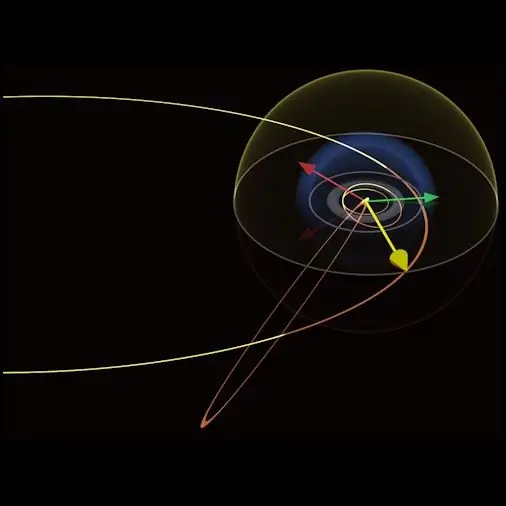
As previously noted, many other scientific and technical disciplines appeared in the space age, such as: spacecraft control systems, communication and data transmission systems in space, space navigation, space medicine and much more. It is worth noting that at the time of the birth of the foundations of astronautics, there was not even a radio as such. The study of electromagnetic waves and the transmission of information over long distances with their help was just beginning. Therefore, the founders of the theory seriously considered light signals - the sun's rays reflected towards the Earth - as a way of transmitting data. Today it is impossible to imagine cosmonautics without all the related applied sciences. In those distant times, the imagination of a number of scientists was really amazing. In addition to communication methods, they also touched on topics such as the Tsiolkovsky formula for a multi-stage rocket.
Is it possible to single out any discipline as the main one among all the variety? It is the theory of motion of cosmic bodies. It is she who serves as the main link, without which astronautics is impossible. This area of science is called cosmodynamics. Although it has many identical names: celestial or space ballistics, space flight mechanics, applied celestial mechanics, the science of the movement of artificial celestial bodies andetc. They all refer to the same field of study. Formally, cosmodynamics enters into celestial mechanics and uses its methods, but there is an extremely important difference. Celestial mechanics only studies orbits; it has no choice, but cosmodynamics is designed to determine the optimal trajectories for reaching certain celestial bodies by spacecraft. And the Tsiolkovsky equation for jet propulsion allows ships to determine exactly how they can influence the flight path.
Cosmodynamics as a science
Since K. E. Tsiolkovsky deduced the formula, the science of the motion of celestial bodies has firmly taken shape as cosmodynamics. It allows spacecraft to use methods to find the optimal transition between different orbits, which is called orbital maneuvering, and is the basis of the theory of movement in space, just as aerodynamics is the basis of atmospheric flight. However, it is not the only science dealing with this issue. In addition to it, there is also rocket dynamics. Both of these sciences form a solid foundation for modern space technology, and both are included in the section of celestial mechanics.
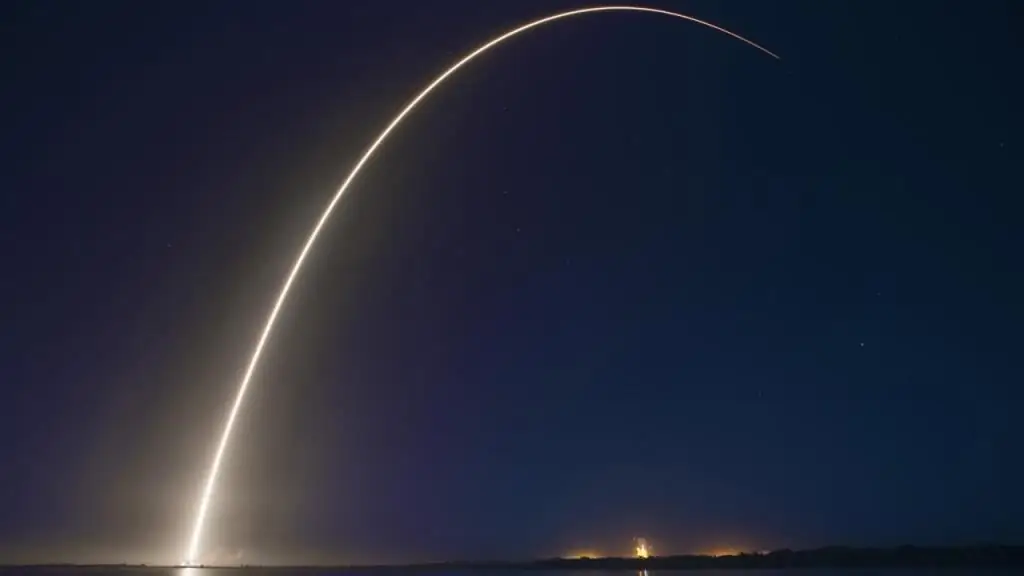
Cosmodynamics consists of two main sections:
- The theory of the movement of the center of inertia (mass) of an object in space, or the theory of trajectories.
- The theory of the motion of a cosmic body relative to its center of inertia, or the theory of rotation.
To figure out what the Tsiolkovsky equation is, you need to have a good understanding of mechanics, that is, Newton's laws.
Newton's first law
Any body moves uniformly and rectilinearly or is at rest until external forces applied to it force it to change this state. In other words, the velocity vector of such motion remains constant. This behavior of bodies is also called inertial motion.
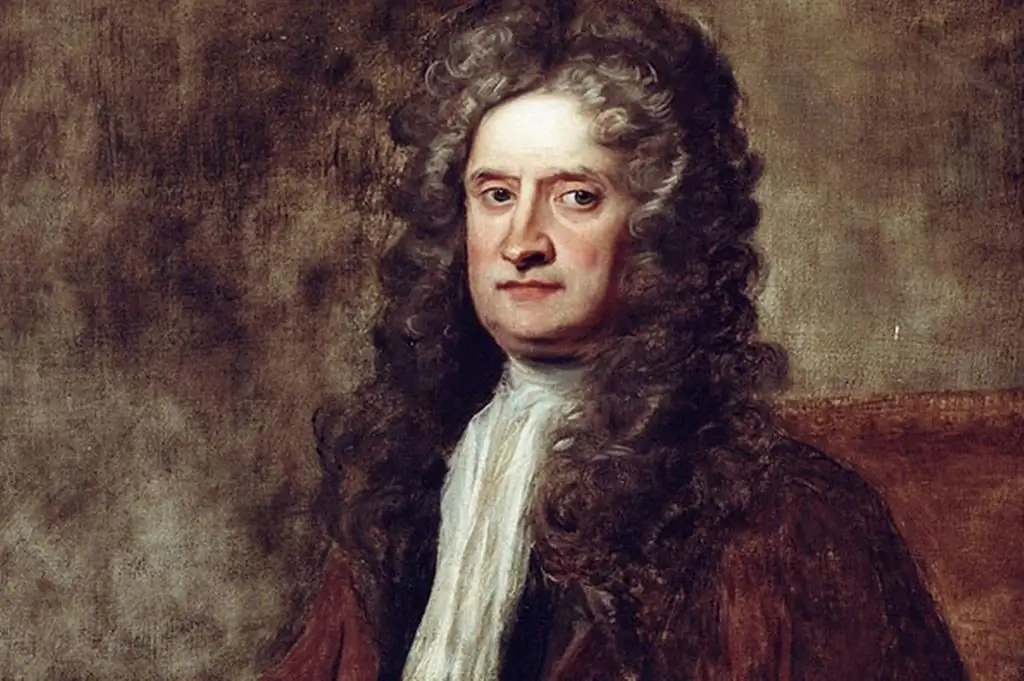
Any other case in which any change in the velocity vector occurs means that the body has acceleration. An interesting example in this case is the movement of a material point in a circle or any satellite in orbit. In this case, there is uniform motion, but not rectilinear, because the velocity vector constantly changes direction, which means that the acceleration is not equal to zero. This velocity change can be calculated using the formula v2 / r, where v is the constant velocity and r is the radius of the orbit. The acceleration in this example will be directed towards the center of the circle at any point of the body's trajectory.
Based on the definition of the law, only force can cause a change in the direction of a material point. In its role (for the case with a satellite) is the planet's gravity. The attraction of planets and stars, as you can easily guess, is of great importance in cosmodynamics in general and when using the Tsiolkovsky equation in particular.
Newton's second law
Acceleration is directly proportional to force and inversely proportional to body mass. Or in mathematical form: a=F / m, or more commonly - F=ma, where m is the proportionality factor, which represents the measurefor body inertia.
Since any rocket is represented as the movement of a body with a variable mass, the Tsiolkovsky equation will change every unit of time. In the above example of a satellite moving around the planet, knowing its mass m, you can easily find out the force under which it rotates in orbit, namely: F=mv2/r. Obviously, this force will be directed towards the center of the planet.
The question arises: why does the satellite not fall on the planet? It does not fall, since its trajectory does not intersect with the surface of the planet, because nature does not force it to move along the action of the force, because only the acceleration vector is co-directed to it, and not the velocity.
It should also be noted that in conditions where the force acting on the body and its mass are known, it is possible to find out the acceleration of the body. And according to it, mathematical methods determine the path along which this body moves. Here we come to two main problems that cosmodynamics deals with:
- Revealing forces that can be used to manipulate the movement of a spacecraft.
- Determine the movement of this ship if the forces acting on it are known.
The second problem is a classic question for celestial mechanics, while the first one shows the exceptional role of cosmodynamics. Therefore, in this area of physics, in addition to the Tsiolkovsky formula for jet propulsion, it is extremely important to understand Newtonian mechanics.
Newton's third law
The cause of a force acting on a body is always another body. But truealso the opposite. This is the essence of Newton's third law, which states that for every action there is an action equal in magnitude, but oppositely directed, called reaction. In other words, if body A acts with force F on body B, then body B acts on body A with force -F.
In the example with a satellite and a planet, Newton's third law leads us to the understanding that with what force the planet attracts the satellite, exactly the same satellite attracts the planet. This attractive force is responsible for imparting acceleration to the satellite. But it also gives acceleration to the planet, but its mass is so great that this change in speed is negligible for it.
Tsiolkovsky's formula for jet propulsion is completely based on the understanding of Newton's last law. After all, it is precisely due to the ejected mass of gases that the main body of the rocket acquires acceleration, which allows it to move in the right direction.
A little about reference systems
When considering any physical phenomena, it is difficult not to touch upon such a topic as a frame of reference. The movement of a spacecraft, like any other body in space, can be fixed in different coordinates. There are no wrong reference systems, there are only more convenient and less. For example, the movement of bodies in the solar system is best described in a heliocentric frame of reference, that is, in coordinates associated with the Sun, also called the Copernican frame. However, the movement of the Moon in this system is less convenient to consider, so it is studied in geocentric coordinates - the count is relative toEarth, this is called the Ptolemaic system. But if the question is whether an asteroid flying nearby will hit the Moon, it will be more convenient to use heliocentric coordinates again. It is important to be able to use all coordinate systems and be able to look at the problem from different points of view.
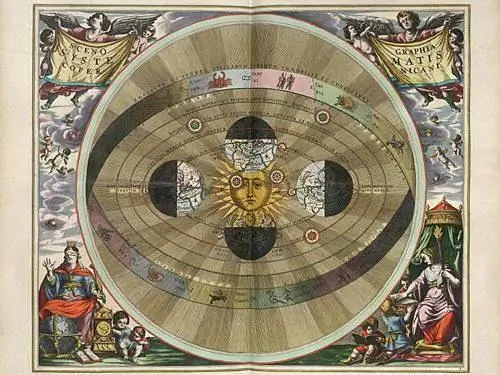
Rocket movement
The main and only way to travel in outer space is a rocket. For the first time this principle was expressed, according to the Habr website, by the Tsiolkovsky formula in 1903. Since then, space engineers have invented dozens of types of rocket engines using a wide variety of types of energy, but they are all united by one principle of operation: ejecting part of the mass from the reserves of the working fluid to obtain acceleration. The force that is generated as a result of this process is called the traction force. Here are some conclusions that will allow us to come to the Tsiolkovsky equation and the derivation of its main form.
Obviously, the traction force will increase depending on the volume of mass ejected from the rocket per unit time and the speed that this mass manages to report. Thus, the relation F=wq is obtained, where F is the traction force, w is the speed of the thrown mass (m/s) and q is the mass consumed per unit time (kg/s). It is worth noting separately the importance of the reference system associated specifically with the rocket itself. Otherwise, it is impossible to characterize the thrust force of a rocket engine if everything is measured relative to the Earth or other bodies.
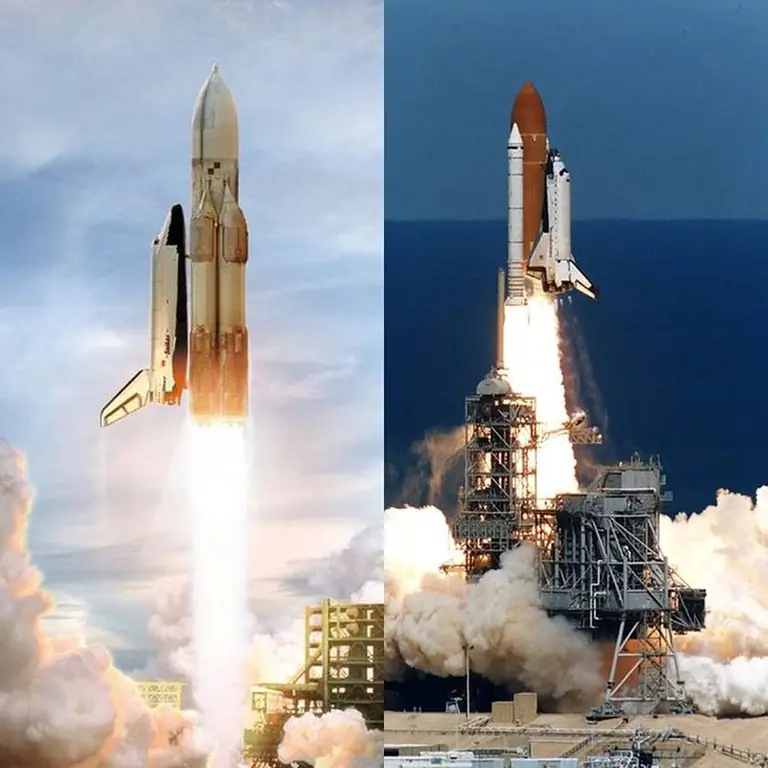
Research and experiments have shown that the ratio F=wq remains valid only for cases where the ejected mass is a liquid or a solid. But rockets use a jet of hot gas. Therefore, a number of corrections must be introduced into the ratio, and then we get an additional term of the ratio S(pr - pa), which is added to the original wq. Here pr is the pressure exerted by the gas at the nozzle exit; pa is atmospheric pressure and S is nozzle area. Thus, the refined formula would look like this:
F=wq + Spr - Spa.
Where you can see that as the rocket climbs, the atmospheric pressure will become less, and the thrust force will increase. However, physicists love convenient formulas. Therefore, a formula similar to its original form is often used F=weq, where we is the effective mass outflow velocity. It is determined experimentally during the testing of the propulsion system and is numerically equal to the expression w + (Spr - Spa) / q.
Let's consider a concept that is identical to we - specific thrust impulse. Specific means pertaining to something. In this case, it is to the gravity of the Earth. To do this, in the above formula, the right side is multiplied and divided by g (9.81 m/s2):
F=weq=(we / g)qg or F=I udqg
This value is measured Isp in Ns/kg or whateversame m/s. In other words, the specific thrust impulse is measured in units of speed.
Tsiolkovsky's formula
As you can easily guess, in addition to the thrust of the engine, many other forces act on the rocket: the attraction of the Earth, the gravity of other objects in the solar system, atmospheric resistance, light pressure, etc. Each of these forces gives its own acceleration to the rocket, and the total from the action affects the final acceleration. Therefore, it is convenient to introduce the concept of jet acceleration or ar=Ft / M, where M is the mass of the rocket in a certain period of time. Jet acceleration is the acceleration with which the rocket would move in the absence of external forces acting on it. Obviously, as the mass is spent, the acceleration will increase. Therefore, there is another convenient characteristic - the initial jet acceleration ar0=FtM0, where M 0 is the mass of the rocket at the start of motion.
It would be logical to ask what speed a rocket can develop in such an empty space after it has used up some amount of the mass of the working fluid. Let the mass of the rocket change from m0 to m1. Then the speed of the rocket after the uniform consumption of mass up to the value m1 kg will be determined by the formula:
V=wln(m0 / m1)
This is nothing but the formula for the motion of bodies with variable mass or the Tsiolkovsky equation. It characterizes the energy resource of the rocket. And the speed obtained by this formula is called ideal. Can be writtenthis formula in another identical version:
V=Iudln(m0 / m1)
It is worth noting the use of the Tsiolkovsky Formula for calculating fuel. More precisely, the mass of the launch vehicle, which will be required to bring a certain weight into Earth's orbit.
In the end it should be said about such a great scientist as Meshchersky. Together with Tsiolkovsky they are the forefathers of astronautics. Meshchersky made a huge contribution to the creation of the theory of motion of objects of variable mass. In particular, the formula of Meshchersky and Tsiolkovsky is as follows:
m(dv / dt) + u(dm / dt)=0, where v is the speed of the material point, u is the speed of the thrown mass relative to the rocket. This relation is also called the Meshchersky differential equation, then the Tsiolkovsky formula is obtained from it as a particular solution for a material point.






